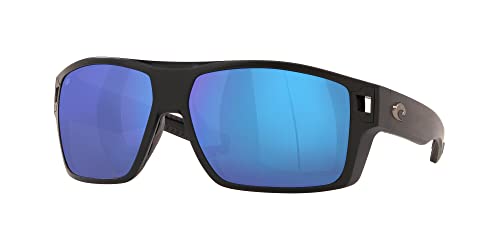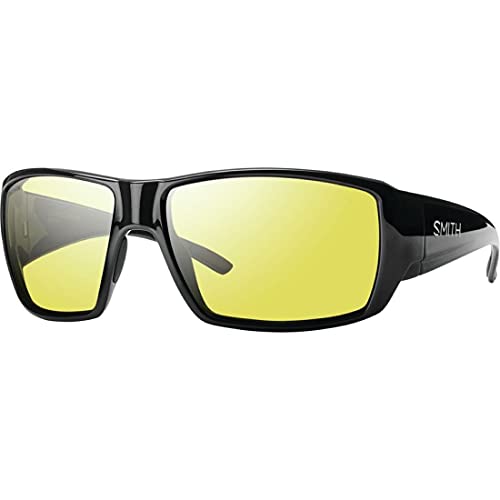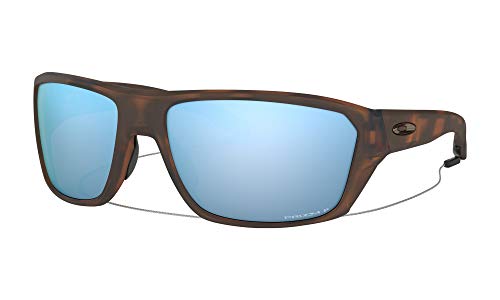The Six Best Sunglasses For Fishing And Boating
Whether you’re navigating a boat, searching for productive waters that hold fish, or both, your eyes are perhaps your most important tool when you’re out on the water. The water also presents some unique challenges for your eyes, and a pair of polarized sunglasses are a practical requirement.
Read on as we take a closer look at some of the best glasses for fishing and boating available today. We’ll also reveal all you need to know to select the perfect pair for what you do on the water.
Top Six Sunglasses for Boating and Fishing
These six models represent some of the most advanced and well-suited sunglasses you’ll find for the water.
Costa Del Mar Diego: Best Overall
The Diego from Costa Del Mar is inspired by San Diego’s rich heritage of offshore sport fishing, and they’re loaded with features that are ideal for the demanding fishing fanatic or boater.
The frames are made from TR-90 nylon, and they feature sweat management channels as well as airflow channels at the hinge to help keep you cool in the sun. There are also cutouts at the temples for hanging them from a sunglasses retainer. Side and top shields help to reduce direct sunlight from entering your eyes.
This model is available with Costa’s 580 glass or polycarbonate lenses and plenty of different lens colors so you can choose the ideal finish for the type of adventuring you do on the water.
Pros
- Excellent selection of lens colors and materials
- Superior airflow
- Perfect for offshore angling
Cons
- Expensive
Smith Optics Guide’s Choice: Best for Freshwater
Fly fishermen were the inspiration for this pair from Smith Optics, and this model offers an ideal blend of features for the freshwater and inshore fisherman that needs maximum clarity and contrast for sight fishing.
These shades offer an 8-base curvature for a wraparound fit, and they provide maximum sun protection while also offering an exceptionally comfortable fit. The Guide’s Choice model employs Smith Optics’ ChromaPop+ lenses, which offer exceptional contrast, clarity, and glare reduction. There are 14 different lens color choices to suit any aquatic activity.
Pros
- Best selection of lens colors
- Unrivaled optical quality
- Comfortable wraparound shape
- Includes retainer
Cons
- Expensive
Oakley Split Shot: Best Value
The Split Shot from Oakley is a performance fishing model that’s ideal for people who aren’t looking to spend $250 or more on a top-of-the-line pair.
The Split Shot features Oakley’s new Prizm Maritime lenses, which offer impressive optical quality, nearly rivaling the best in the business. The wraparound design is exceptionally comfortable, and they’re so light you might forget you’re wearing glasses.
You can score a great deal on certain color combinations of this model. They’re also an excellent choice if you’re looking for something unique, as you can customize virtually every component from the lenses and frames to the logos and details on Oakley’s website.
Pros
- Affordable
- Made in the USA
- Lightweight
- Includes Retainer
Cons
- Custom options are much more expensive than stock
Maui Jim Onshore: Most Versatile
Regardless of your face shape, if you’re looking for a frame that looks great on virtually everybody, check out the Onshore from Maui Jim.
These glasses feature a classic Wayfarer shape, and they’re lightweight and comfortable for long days on the water. Maui Jim sunglasses are revered for their optical qualities, and these lenses offer a long list of performance technologies to provide optical clarity and contrast on the water.
The Onshore is available in four different frame and lens colors, so you won’t have much trouble finding a pair that’s well suited to how you enjoy the water.
Pros
- Excellent optics
- Looks great on every face shape
- Excellent glare reduction
Cons
- Limited selection of colors
KastKing Hiwassee: Most Affordable
The Hiwassee from KastKing is the perfect choice when you need performance fishing shades for the price of a pair of throwaways.
These sunglasses are made from Grilamid, which is a nearly unbreakable and exceptionally resilient material. It’s also exceptionally light, lending additional comfort to the wraparound frames.
This frame comes in plenty of lens and frame combinations, and each one features nose and temple grips to keep the sunglasses in place even when you’re wet.
Pros
- Affordable
- Virtually unbreakable
- Plenty of lens and frame colors
Cons
- Not as scratch-resistant as top brands
- Less contrast and clarity than high-end lenses
Costa Del Mar Blackfin PRO: Best Enhanced Coverage
The Blackfin PRO is a no-brainer for the angler looking for the most coverage from their fishing and boating sunglasses. The frames are wide with top and side shields and extra-wide arms to stop stray sunlight in its tracks.
The Blackfin PRO boasts all the performance features Costa is known for, such as sweat management channels, grippy rubber nose, and temple pads, and retainer-ready cutouts at the tips.
Pros
- Offers the most coverage
- Comfortable
- Lightweight
Cons
- Wide arms make for a pronounced sunglasses tan
- Limited frame and lens selection
Selecting the Best Sunglasses for Fishing and Boating
With so many pairs of sunglasses on the market, it’s difficult to make heads or tails of what separates an excellent pair from a mediocre one. Consider the features and characteristics below, and you’ll be well on your way to selecting the best fishing sunglasses.
Materials
Being on the water means dealing with conditions you’re rarely subject to when you’re on land, especially if you’re in saltwater. Seaspray is corrosive, and some commonly used sunglass materials will quickly degrade when exposed to the water.
Metal frames are the worst choice for the water, as they’ll quickly corrode from exposure to saltwater. You’ll also want to avoid acetate, as it can become softened by the heat of the sun. Look for frames made from nylon, as this material won’t corrode or become soft, and it can stand up to the rigors of life on the water.
Coverage
Coverage is another critical consideration when shopping for glasses. Water is an excellent reflector of sunlight, and glare from the water can make it difficult to see. While your lenses will significantly cut down on glare, it’s still possible for light to leak in through the sides of your glasses.
Look for sunglasses that offer coverage on the sides or those that offer a wraparound design that hugs your face close to prevent light from leaking in.
Performance Features
Today’s performance sunglasses feature appointments designed to keep you comfortable when you’re on the water.
Rubberized materials are often employed on the nose and arms of glasses to help keep them in place. Many manufacturers also incorporate channels inside the frame, which help drain sweat away from your eyes during hot days on the water. Always check to see what kind of performance features the glasses possess, which may keep you more comfortable on the water.
Lens Characteristics
Sunglass lenses are the most important component of sunglasses for fishing and boating, and there are several characteristics you’ll want to look for when shopping.
Lens Material
Glass and polycarbonate plastic are the most popular materials for making lenses. Each material has its pros and cons, and you’ll want to consider them before investing in specialized eyewear.
Plastic lenses offer the most UV protection, they’re lightweight, extremely shatter-resistant, and they’re more affordable than glass. But, they don’t offer the same optical clarity as glass lenses, and they aren’t as scratch-resistant.
On the other hand, glass lenses are heavier, less shatter resistant, and more expensive than plastic.
Either material makes an excellent choice, depending on your needs. If your greatest concern is clarity, then glass lenses are the way to go. Otherwise, most anglers and boaters opt for plastic.
Polarization
Polarization is a practical requirement for sunglasses when you’re on the water. Light from the sun scatters in every direction when it reflects off most surfaces. But, on a flat surface like the water, light can bounce off the surface and directly to your eyes. This is glare.
Polarized lenses are treated with special chemicals that create vertical openings for light to travel through. Vertical light rays pass through to your eyes, while horizontal rays (i.e., the ones that create glare) are filtered out. Polarized lenses are darker than non-polarized, but they provide enhanced clarity and contrast while virtually eliminating glare.
Mirroring
In addition to polarization, lenses can also be mirrored, which helps to further reduce glare from the water. While this feature is less critical than polarization, many boaters and anglers also opt for mirrored lenses to eliminate glare.
Color
The tint color of sunglass lenses is more than a matter of style. Different tints have characteristics that are helpful in various conditions.
- Blue – Best for full sun and heavy glare. Blue lenses are preferred by offshore anglers for their superior glare reduction.
- Green – Best for inshore fishing and boating, and sight fishing. Green lenses provide the most contrast.
- Silver – All around lenses suited for land and water activities. Silver lenses reduce glare and eye fatigue.
- Copper – Allows for more light transmission, making them better suited for cloudy or overcast days when glare is still an issue.
- Yellow – Offers the most light transmission of any lens color. Yellow lenses are an excellent choice for dawn and dusk situations, and they provide enhanced contrast in low lighting.
Final Word
Investing in a pair of the best sunglasses for fishing and boating is a wise choice if you’re looking to maximize your enjoyment when you’re on the water. Consider the features that are most important to you, and be sure to take a closer look at each of the sunglasses on our list. You’ll be well on your way to selecting the best sunglasses for fishing and boating for you.






